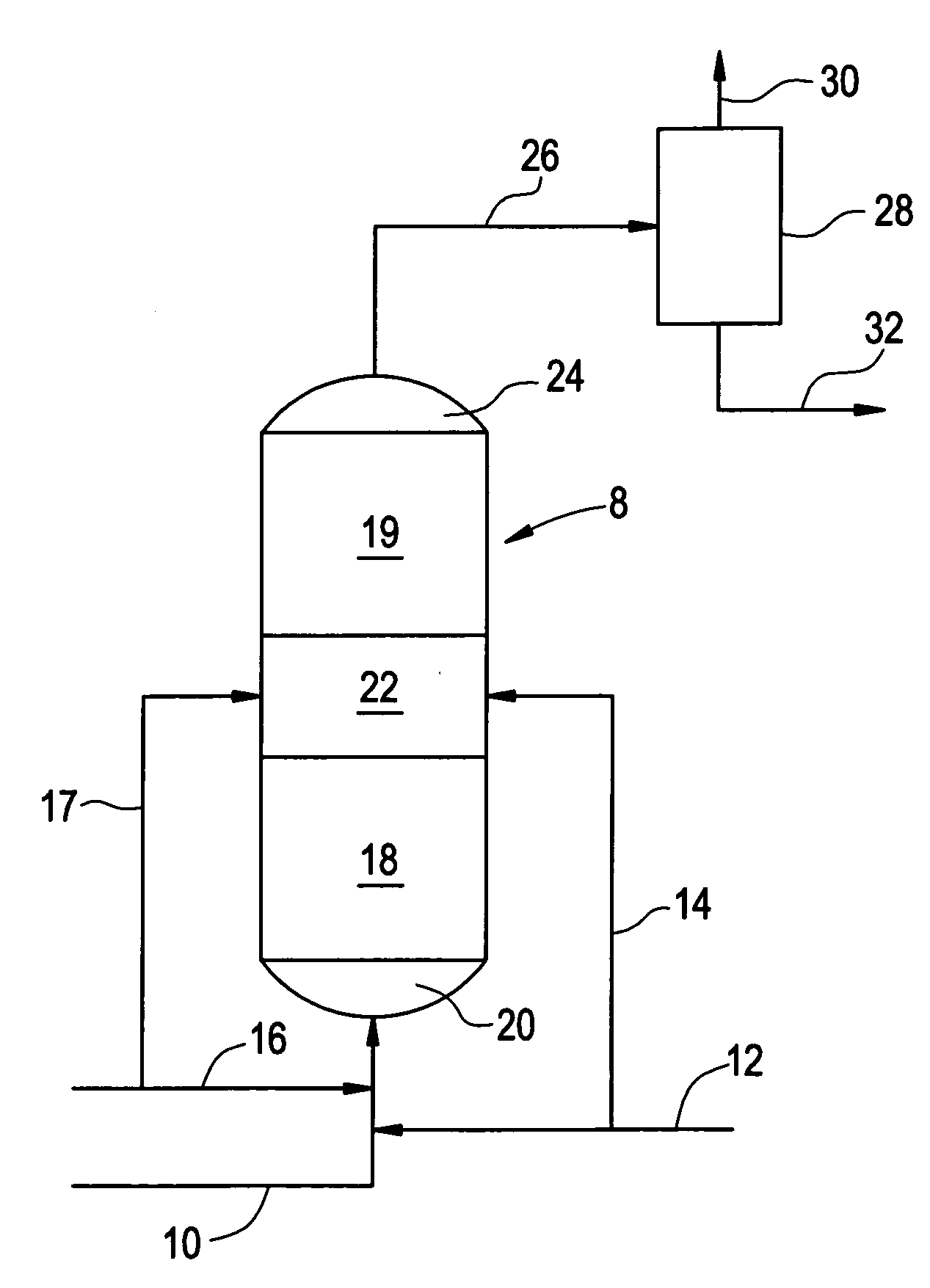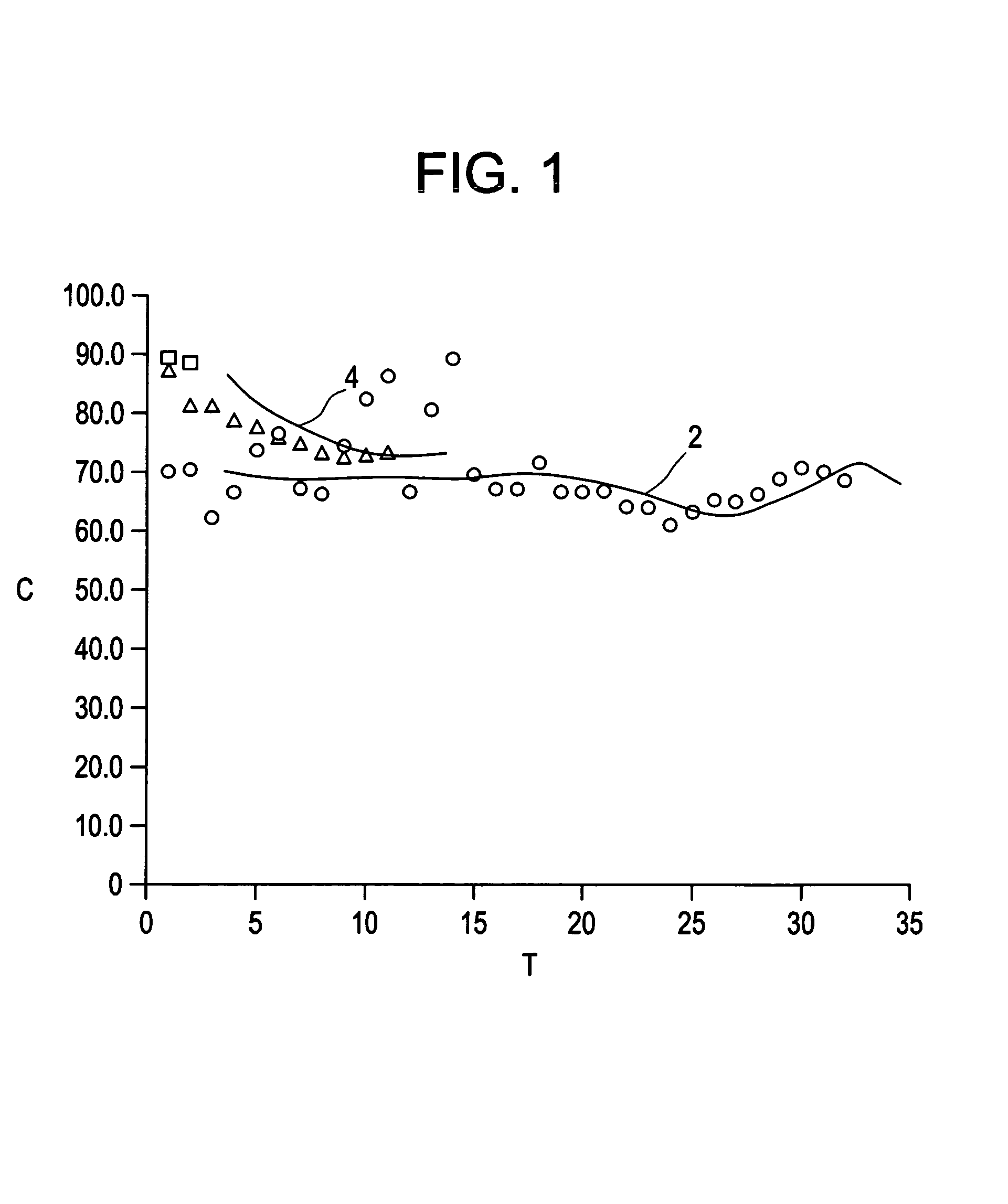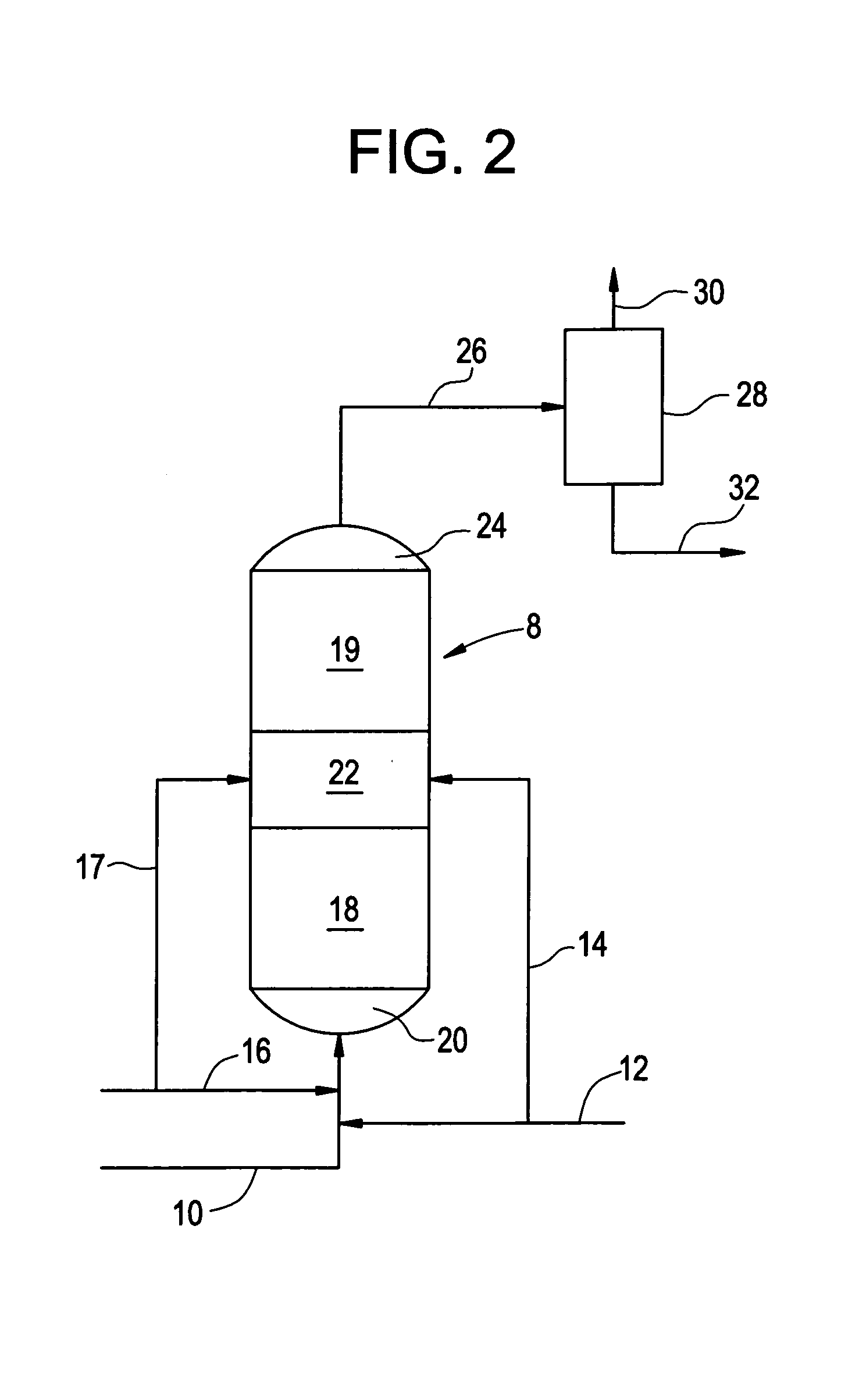Process for the selective hydrogenation of phenylacetylene
a technology of phenylacetylene and hydrogenation process, which is applied in the direction of hydrocarbon preparation catalysts, metal/metal-oxide/metal-hydroxide catalysts, physical/chemical process catalysts, etc., can solve the problem that the fractional distillation of phenylacetylene and styrene can only be achieved with difficulty, and achieve enhanced styrene content and reduced phenylacetylene content
- Summary
- Abstract
- Description
- Claims
- Application Information
AI Technical Summary
Benefits of technology
Problems solved by technology
Method used
Image
Examples
Embodiment Construction
[0007]As noted previously, both palladium-based catalysts and copper-based catalysts have been employed in the hydrogenation of phenylacetylene in the presence of styrene monomer. The present invention will be described with respect to phenylacetylene and styrene. However, it is to be recognized that the invention can also be carried out with respect to substituted phenylacetylenes in the presence of the corresponding substituted styrene monomers. Such phenylacetylene and styrene pairs include vinyltoluene and tolacetylene, divinylbenzene and vinylacetylene.
[0008]The phenylacetylene reduction process described in the aforementioned patent to Butler et al involves the use of a palladium catalyst which can be employed under relatively severe dehydrogenation conditions to arrive at a very low phenylacetylene content in the resulting product. While this is highly desirable, palladium catalysts are relatively expensive. The aforementioned Maurer et al process offers the advantage of a re...
PUM
| Property | Measurement | Unit |
|---|---|---|
| pressure | aaaaa | aaaaa |
| temperature | aaaaa | aaaaa |
| pressure | aaaaa | aaaaa |
Abstract
Description
Claims
Application Information
 Login to View More
Login to View More - R&D
- Intellectual Property
- Life Sciences
- Materials
- Tech Scout
- Unparalleled Data Quality
- Higher Quality Content
- 60% Fewer Hallucinations
Browse by: Latest US Patents, China's latest patents, Technical Efficacy Thesaurus, Application Domain, Technology Topic, Popular Technical Reports.
© 2025 PatSnap. All rights reserved.Legal|Privacy policy|Modern Slavery Act Transparency Statement|Sitemap|About US| Contact US: help@patsnap.com



